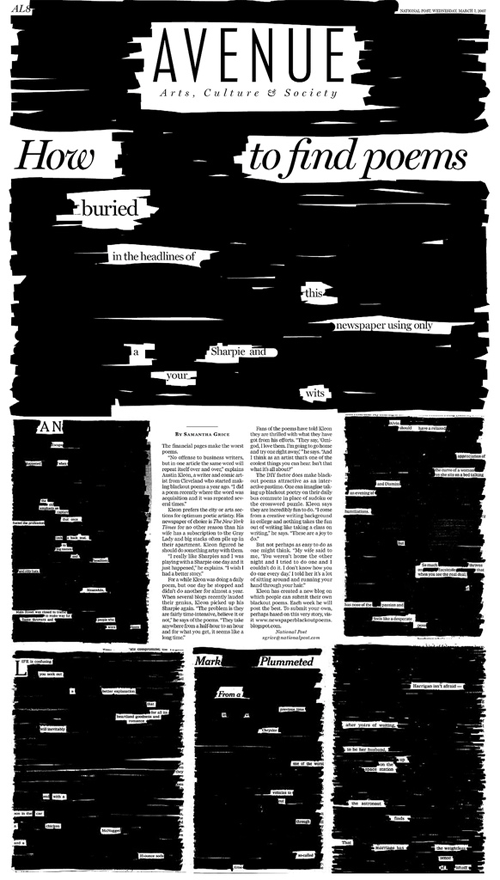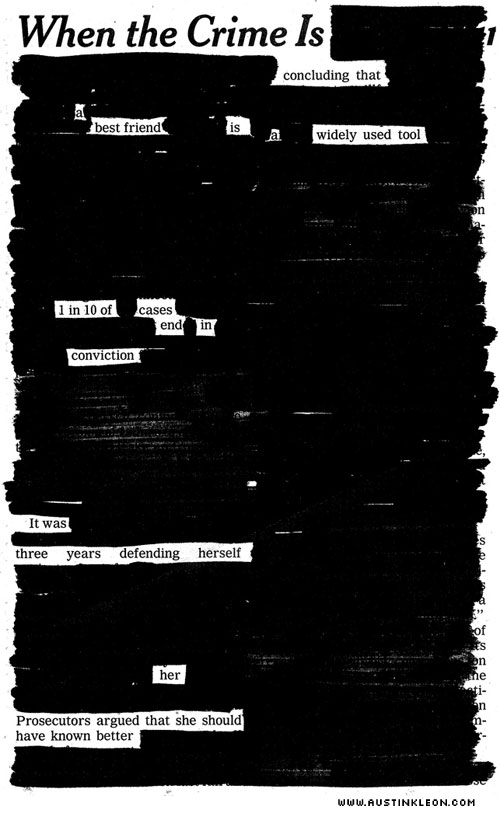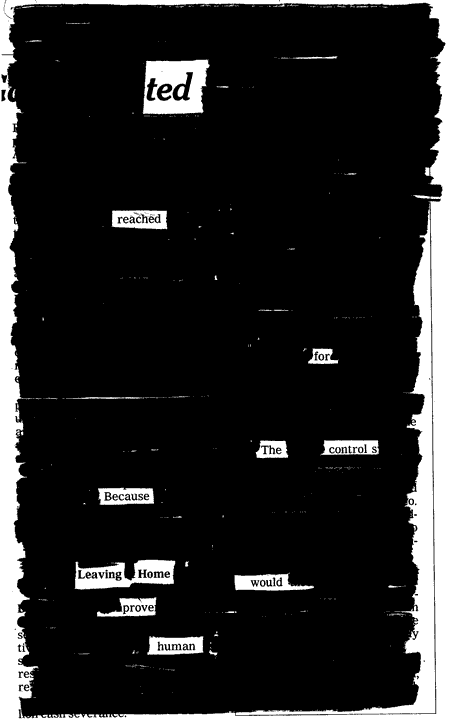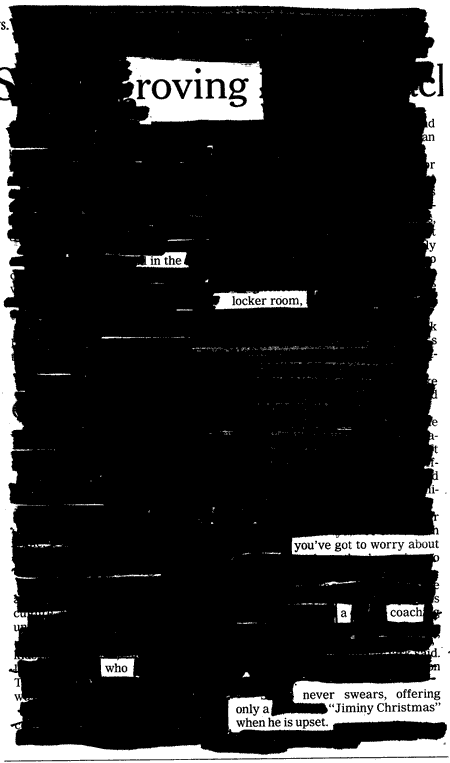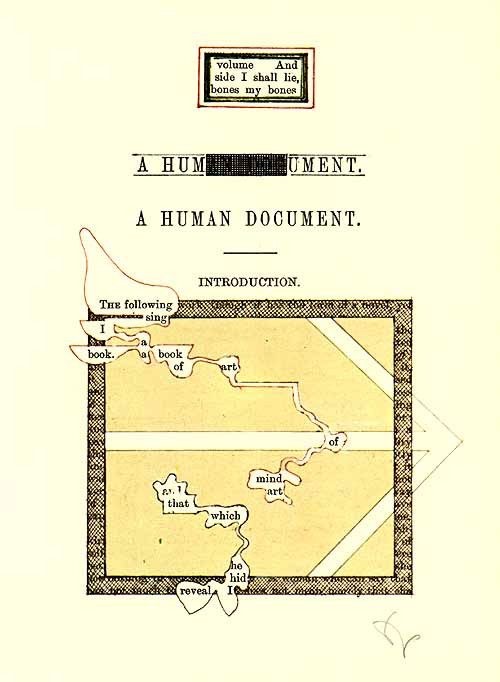I was really surprised (but pleased!) when Samantha Grice called me last week and said that the National Post in Toronto was interested in running a few newspaper blackout poems in the “Avenue” section of Arts and Life. The National Post is a fairly conservative newspaper, but they’ve won several awards for their layout and graphic design. The article ran yesterday, and here’s what Samantha wrote up:
How to find poems buried in the headlines of this newspaper using only a Sharpie and your wits
BY SAMANTHA GRICE
National Post
The financial pages make the worst poems.
“No offense to business writers, but in one article the same word will repeat itself over and over,” explains Austin Kleon, a writer and comic artist from Cleveland who started making blackout poems a year ago. “I did a poem recently where the word was acquisition and it was repeated several times.”
Kleon prefers the city or arts sections for optimum poetic artistry. His newspaper of choice is The New York Times for no other reason than his wife has a subscription to the Gray Lady and big stacks often pile up in their apartment. Kleon figured he should do something artsy with them.
“I really like Sharpies and I was playing with a Sharpie one day and it just happened,” he explains. “I wish I had a better story.”
For a while Kleon was doing a daily poem, but one day he stopped and didn’t do another for almost a year. When several blogs recently lauded their genius, Kleon picked up his Sharpie again. “The problem is they are fairly time-intensive, believe it or not,” he says of the poems. “They take anywhere from a half-hour to an hour and for what you get, it seems like a long time.”
Fans of the poems have told Kleon they are thrilled with what they have got from his efforts. “They say, ‘Omigod, I love them. I’m going to go home and try one right away,'” he says. “And I think as an artist that’s one of the coolest things you can hear. Isn’t that what it’s all about?”
The DIY factor does make blackout poems attractive as an interactive pastime. One can imagine taking up blackout poetry on their daily bus commute in place of sudoku or the crossword puzzle. Kleon says they are incredibly fun to do. “I come from a creative writing background in college and nothing takes the fun out of writing like taking a class on writing,” he says. “These are a joy to do.”
But not perhaps as easy to do as one might think. “My wife said to me, ‘You weren’t home the other night and I tried to do one and I couldn’t do it. I don’t know how you do one every day.’ I told her it’s a lot of sitting around and running your hand through your hair.”
Omigod! Haha.
